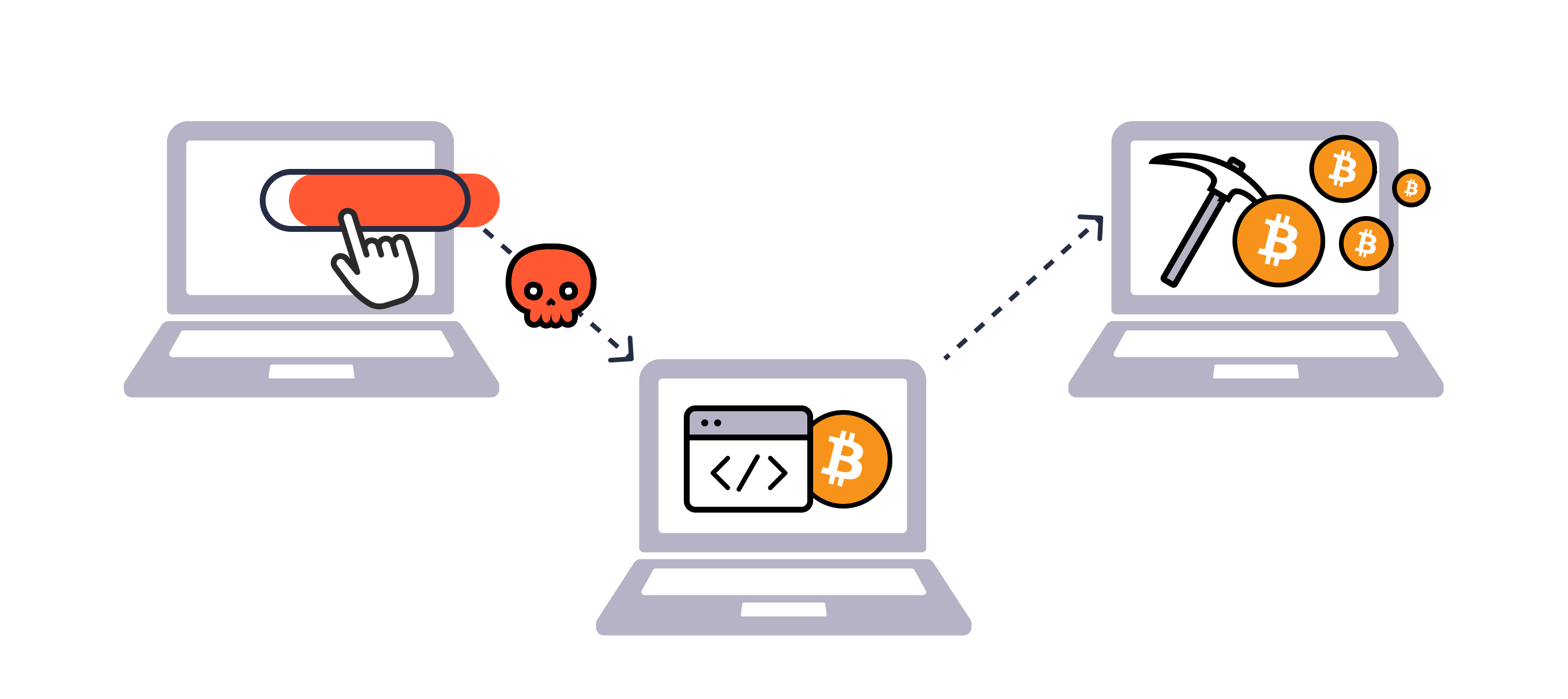Cryptojacking: The Invisible Threat

This blog post will cover:
- What is Cryptojacking?
- The Evolution of Cryptojacking
- How Cryptojacking Affects You
- Detecting and Preventing Cryptojacking
- Conclusion
Did you know your device could be secretly mining cryptocurrency for someone else right now? Cryptojacking, a stealthy cyber threat, is increasingly infiltrating our digital lives. This article takes you on a journey through the shadowy world of what is cryptojacking, revealing how it operates and the steps you can take to protect yourself. Let's uncover the hidden dangers and learn how to shield our digital lives from this invisible enemy.
What is Cryptojacking?
Cryptojacking is a cyber attack where hackers secretly harness the processing power of users' devices to mine cryptocurrencies. This is achieved by embedding malicious scripts into websites or software. When a user accesses an infected site or uses compromised software, the script activates, covertly using the device's resources to perform complex calculations for cryptocurrency transactions, which are then sent to the hacker's wallet.
Unlike legitimate mining, which involves using one's own resources with consent, this method operates without the user's knowledge, making it a form of cyber theft. These lightweight scripts are designed to avoid detection and can run on any internet-connected device, including PCs, smartphones, and servers.
Cryptojacking can be broadly classified into four types:
In-browser cryptojacking: browser-based attack is the most prevalent type. It entails implanting a JavaScript code onto a website. Upon visiting the site, the script activates in the background of the user's browser, utilizing their computer's resources for cryptocurrency mining.
In-host cryptojacking: this involves the installation of a crypto mining script directly onto the victim's device. Typically, attackers accomplish this through phishing emails or deceptive websites that persuade users to download and install malware.
In-memory cryptojacking: occurs when the crypto mining script runs within the memory of the victim's device, making detection more challenging because the script does not leave any traces on the hard drive.
Cloud cryptojacking: attackers illicitly utilize an organization's cloud resources for cryptocurrency mining purposes. They obtain access to the cloud servers through different means, including exploiting security flaws or utilizing stolen login credentials.
Each of these types poses unique challenges in terms of detection and prevention. Hence, it's crucial to remain updated on the newest risks and implement strong cybersecurity practices.
The Evolution of Cryptojacking
Cryptojacking has transformed considerably since the beginning of cryptocurrencies. Initially, hackers used ransomware for online theft, but with the emergence of digital currencies like Bitcoin, they shifted to exploiting others' resources for mining. Numerous notable instances of cryptojacking have emerged over time, underscoring the increasing danger of this hidden threat.
Some of the most notable cryptojacking examples include:
Coinhive
Coinhive offered a JavaScript miner designed for the Monero Blockchain, which website owners could integrate into their sites. However, it became notorious for its misuse by hackers who clandestinely inserted the script into numerous websites, exploiting it for extensive cryptojacking without the consent of site owners or visitors.
WannaMine
During February 2018, Panda Security, a cybersecurity company based in Spain, detected a cryptojacking script dubbed "WannaMine" proliferating across global computer networks. This malware strain was actively engaged in mining the cryptocurrency Monero.
The Los Angeles Times
In 2018, cryptojacking software was detected embedded within the Homicide Report section of the Los Angeles Times website, surreptitiously harnessing visitors' devices to mine Monero cryptocurrency without their consent.
Microsoft Store Apps
During 2019, Microsoft flagged eight applications within its Microsoft Store for engaging in illicit Bitcoin mining operations. Microsoft discovered that these apps were utilizing the authentic resources installed by users to mine cryptocurrency without their knowledge.
How Cryptojacking Affects You
The effects of cryptojacking are substantial for both individuals and businesses. It commonly arises when unwitting users install applications containing harmful scripts, granting cyber attackers entry to their internet-connected devices.
For individual users, such attacks may lead to:
Slower device performance: the scripts utilize processing resources, resulting in observable decreases in speed.
High electricity bills: intensive power and computing demands from mining can trigger unanticipated rises in energy expenses.
Risk of hardware impairment: excessive processing usage might induce overheating in devices, potentially causing hardware malfunctions.
For businesses, the consequences can be more severe:
Decreased productivity: slowdowns in devices and networks can reduce overall productivity.
Increased operational costs: higher electricity bills from intensive coin mining can drive up costs.
Compromised data: the vulnerabilities exploited for cryptojacking can also be used to access sensitive business data.
Detecting and Preventing Cryptojacking
That’s all good, but how to detect cryptojacking? Identifying such an attack can be difficult due to its covert nature. However, there are indicators and tools that can help detect it:
High processor usage: cryptojacking scripts consume a lot of processing power, resulting in elevated CPU usage.
Reduced device performance: a slowdown in your device's operation can be a sign of cryptojacking.
Overheating: increased processor activity can cause devices to overheat.
Cybersecurity tools: various software solutions can detect and eliminate cryptojacking scripts.
For those wondering how to prevent cryptojacking - this requires a mix of vigilance, up-to-date security measures, and cautious online behavior. Here are strategies to protect against it:
Use updated security software: regularly update antivirus and anti-malware programs to detect and thwart threats effectively.
Employ ad-blockers and script blockers: utilize these tools to intercept and prevent malicious cryptomining code frequently hidden in online advertisements.
Be cautious with downloads and links: refrain from downloading software or clicking on links from sources lacking trustworthiness to avoid potential infiltration.
Use strong passwords: enhance device and network security by using strong, unique passwords to deter unauthorized access.
Disable JavaScript: disabling JavaScript can serve as an additional defense against numerous cryptojacking scripts seeking to exploit vulnerabilities.
Secure browser extensions: only install and utilize browser extensions from reputable sources to minimize the risk of infiltration.
Monitor network traffic: stay vigilant for irregular network traffic patterns, which could signify ongoing cryptojacking activities.
For businesses, it's also essential to train employees, regularly monitor networks, and use advanced threat detection systems. While these approaches can greatly reduce the risk, no solution is completely foolproof. Continuous vigilance and staying informed about new threats and defenses are crucial for maintaining strong cybersecurity.
Conclusion
Cryptojacking presents serious threats to individuals and businesses alike. Staying informed and taking preventive measures are essential to guard against this covert cyber threat. Adopting strong cybersecurity practices, educating employees, and consistently monitoring network activity can greatly mitigate the risk of cryptojacking. Safeguarding your devices and data requires continuous vigilance and dedication to security. Stay protected and knowledgeable with SimpleSwap.
SimpleSwap reminds you that this article is provided for informational purposes only and does not provide investment advice. All purchases and cryptocurrency investments are your own responsibility.


